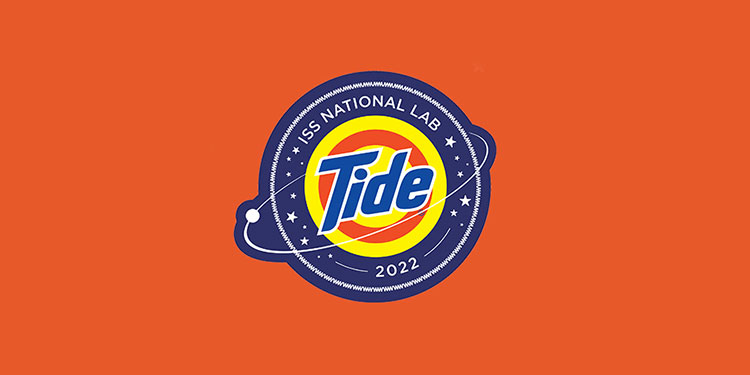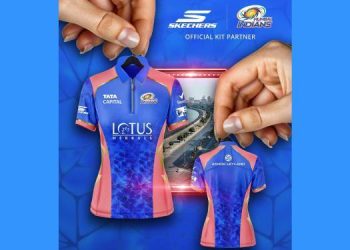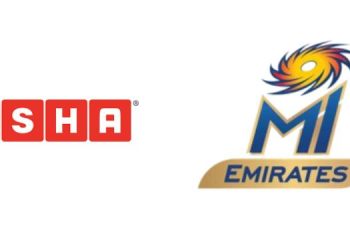Mumbai: Tide® has signed a Space Act Agreement with NASA to help in the development of laundry detergent solutions and technology development in space. Under the agreement, NASA may test and study Tide cleaning solutions in space. The study could have potential on-planet implications like innovative solutions for resource and environmental challenges on Earth. Aligning with Tide’s decade-long sustainability commitment, Ambition 2030, Tide will strive to bring off planet learnings back to everyday consumer products.
Currently, astronauts on the International Space Station (ISS) wear clothing several times before replacing with a new set. Clothing is delivered to the station through resupply shipment opportunities. The limited cargo capacity makes the practice of replenishing the clothing supply challenging for deep space missions, such as Artemis Moon missions and a crewed roundtrip Mars mission. Without a laundry solution, 160 pounds of clothing per crew member per year are launched to ISS. Human roundtrip missions to Mars could be two to three years in length.
Major challenges for off-Earth laundering include ingredient safety and compatibility with NASA life support systems, and the limited amount of water available per wash load and the requirement that the wash water be purified back to drinking-quality water. To combat these challenges, Tide has developed a fully degradable detergent, specifically designed for use in space to solve malodour, cleanliness and stain removal problems for washable items used during deep space missions, while being suitable for use in a close-loop water system.
Onboard a 2022 cargo launch to the space station, “Mission PGTide” (P&G Telescience Investigation of Detergent Experiments), teams will test the stability of cleaning ingredients under microgravity conditions and exposure to the radiation levels experienced in space in partnership with the ISS U.S. National Laboratory and SEOPS. In addition, the stain removal ingredients and performance will be tested on board the ISS through experiments with Tide products like Tide to Go Pens.
“The ISS National Lab is excited to work with the P&G team once again as they push the limits of their research and development onboard the orbiting laboratory,” said Dr. Michael Roberts, acting chief scientist for the ISS National Lab. “Through private-sector utilization of the space station, companies like P&G can conduct investigations in ways not possible on Earth to develop new consumer products, enhance existing products, and better understand processes that further business models both on the ground and in low Earth orbit. We look forward to this first investigation of Tide in Space and hope that many more will soon follow.”
In addition to testing onboard the ISS National Lab, NASA and Tide researchers may study how an innovative combined washing and drying unit utilizing the special-formulated detergent could potentially be integrated into planetary habitats that may be used for the Artemis Moon and Mars missions under low-gravity surface conditions. There are also a unique set of challenges that present themselves for a crewed Mars mission. Future missions to and from Mars expect to span multiple years, and these long-duration flights will require laundry solutions designed for extreme space-based environments and varying gravity conditions.
“This partnership was created to rethink cleaning solutions – forcing us to rethink innovations for resource constrained and challenging environments like the ISS, deep space and even the future of our home planet,” said Aga Orlik, Senior Vice President, P&G North America Fabric Care. “We are eager to apply our learnings from our partnerships with NASA and the ISS National Lab to Tide on Earth, developing a low resource-use laundry solution for everyday use while meeting consumer demand for more sustainable products.”
The news of Tide’s space exploration to innovate low-impact laundry solutions comes on the heels of Tide’s Ambition 2030 commitments, announced earlier this year. Included among Tide’s Ambition commitments were actionable goals to find resource efficiencies in energy, water and waste across the laundry lifecycle – from manufacturing and packaging to consumer use phase and end of life – to reduce the environmental impact of a load of laundry while increasing the impact of clean clothes.
“Humanity has reached a pivotal point where on one hand, we’re on the exciting cusp of space colonization, and on the other, facing a critical period where action must be taken now to save the planet, we all call home,” said Orlik. “The collaboration with NASA and the ISS National Lab is particularly exciting because it allows us to push the bounds of resource efficiency to its absolute limit, uncovering learnings with practical applications for both the future of laundry in space and here on Earth.”

















